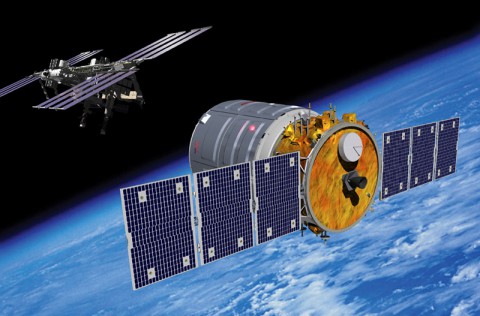 Houston, TX – After a successful launch on Wednesday, September 18th, the Orbital Sciences’ Cygnus cargo spacecraft is approaching the International Space Station, signaling the coming completion of NASA’s Commercial Orbital Transportation Services (COTS) Program.
Houston, TX – After a successful launch on Wednesday, September 18th, the Orbital Sciences’ Cygnus cargo spacecraft is approaching the International Space Station, signaling the coming completion of NASA’s Commercial Orbital Transportation Services (COTS) Program.
The COTS program began back in 2006 with the vision of acquiring cargo resupply and astronaut transportation services to low-Earth orbit from commercial companies.

NASA initiatives such as COTS are helping to develop a robust U.S. commercial space transportation industry with the goal of achieving safe, reliable and cost-effective transportation to and from low-Earth orbit to meet the needs of both commercial and government customers.
NASA’s Commercial Crew Program also is working with commercial space partners to enable the availability of U.S. commercial human spaceflight capabilities in the next few years.
“This is so critical to NASA to continue to resupply the station, so it can do its amazing discoveries on orbit, and by turning over these capabilities to low-Earth orbit, this is allowing NASA to focus on the more challenging efforts of continuing human exploration into deeper space,” said Alan Lindenmoyer, program manager for NASA’s Commercial Crew and Cargo program at a September 4th news briefing at Johnson Space Center.
The same year as its inception, Space Exploration Technologies of Hawthorne, CA, (SpaceX) was awarded the first Space Act Agreement under the program. With the completion of their final demonstration flight in 2012, SpaceX began flying supply missions to the space station for NASA.
Orbital Sciences was awarded the second of the program’s Space Act Agreements in 2008 and began work to develop capabilities to fulfill NASA’s vision.
“[NASA] became an investor and a technical advisor with Orbital, and instead of verifying a long list of detailed requirements, we put together a pre-negotiated list of milestones that would serve as our checkpoint throughout the execution of the Space Act Agreement,” Lindenmoyer said at the September 4th news briefing.
“This is certainly a demonstration not only of the technical capabilities of the system but also of how well we work together with this new way of doing business with public/private partnerships,” Lindenmoyer said at a September 17th news conference at Wallops Flight Facility.
With a successful launch and demonstrations on flight days one and two, the Cygnus spacecraft advances toward the space station where a series of eight demonstration maneuvers and checkouts will be performed including testing of the GPS and targeting systems as well as burn maneuvers that will bring the vehicle underneath the station on Sunday, September 22nd.
This series of maneuvers and checkouts is standard for any first-time visiting vehicle to station to ensure safety. Tests such as these were performed by SpaceX’s Dragon vehicle as well as international partners’ spacecrafts such as the Japanese HTV.
After Cygnus is cleared of these checkouts and allowed to enter the keep-out zone of the space station, the 200-meter radius surrounding the complex, Cygnus will be captured by the station’s robotic arm. Once captured, it will be berthed and installed into the Harmony module.
NASA Television is scheduled to cover Cygnus’ rendezvous with station beginning at 4:30am on Sunday, September 22nd, continuing through capture and installation of the vehicle.
On October 22nd, Cygnus will be uninstalled from station and will perform a series of departure maneuvers as part of its milestone requirements. The final objectives will occur approximately two days later with a destructive re-entry into Earth’s atmosphere.
After approximately seven years, the COTS program will come to completion with the successful end of this Orbital demonstration flight, and NASA will have two commercial companies flying resupply missions to low-Earth orbit.
“[This flight] represents the culmination of the COTS program after many years but not the end of partnerships with industry,” Lindenmoyer said at the September 4th news briefing. “We have great ideas in store for future partnerships with industry. I am confident that the end of this program will open new doors and partnerships to continue in the future.”
Written by Sean Wesley
NASA’s Johnson Space Center


